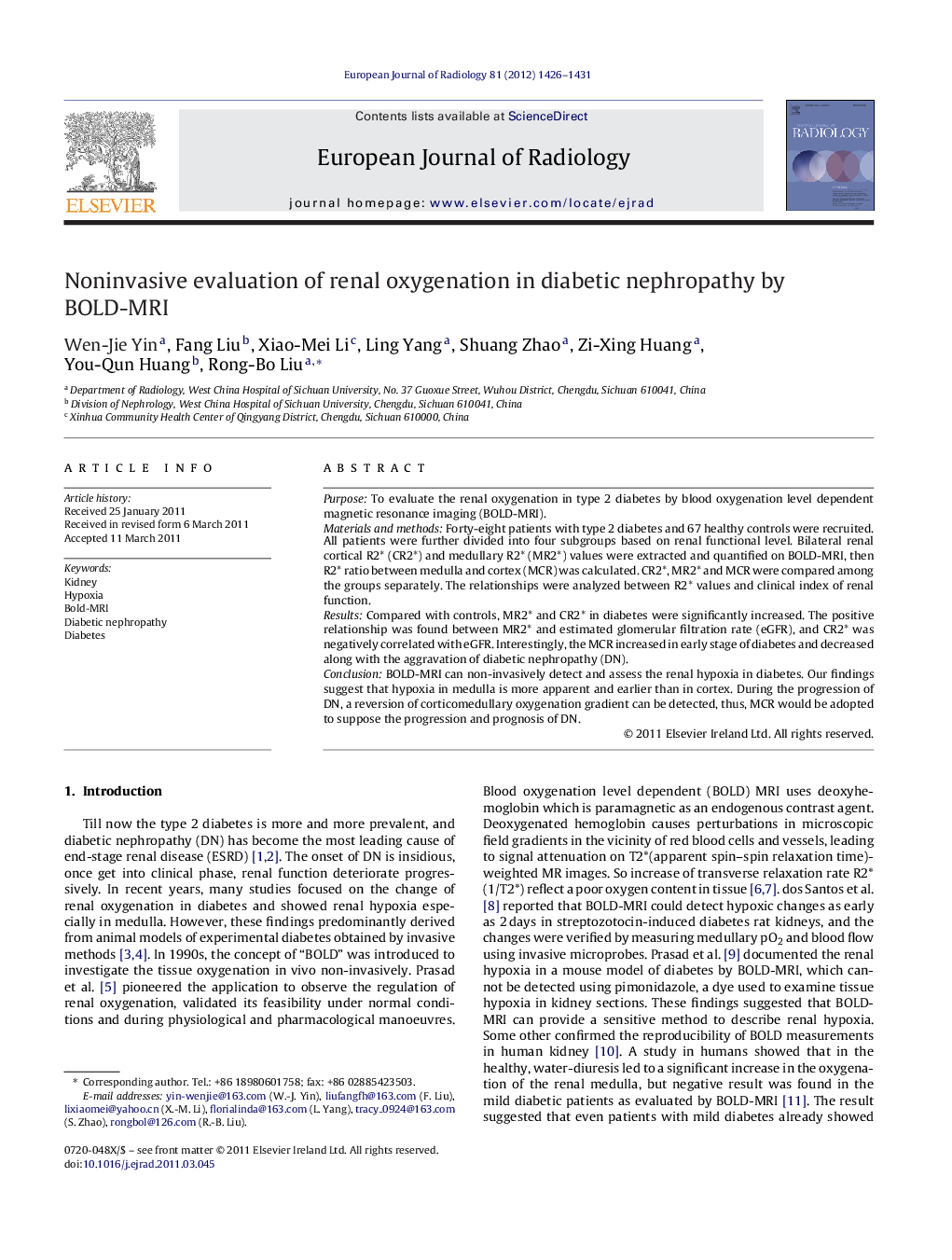| Article ID | Journal | Published Year | Pages | File Type |
|---|---|---|---|---|
| 4225748 | European Journal of Radiology | 2012 | 6 Pages |
PurposeTo evaluate the renal oxygenation in type 2 diabetes by blood oxygenation level dependent magnetic resonance imaging (BOLD-MRI).Materials and methodsForty-eight patients with type 2 diabetes and 67 healthy controls were recruited. All patients were further divided into four subgroups based on renal functional level. Bilateral renal cortical R2* (CR2*) and medullary R2* (MR2*) values were extracted and quantified on BOLD-MRI, then R2* ratio between medulla and cortex (MCR) was calculated. CR2*, MR2* and MCR were compared among the groups separately. The relationships were analyzed between R2* values and clinical index of renal function.ResultsCompared with controls, MR2* and CR2* in diabetes were significantly increased. The positive relationship was found between MR2* and estimated glomerular filtration rate (eGFR), and CR2* was negatively correlated with eGFR. Interestingly, the MCR increased in early stage of diabetes and decreased along with the aggravation of diabetic nephropathy (DN).ConclusionBOLD-MRI can non-invasively detect and assess the renal hypoxia in diabetes. Our findings suggest that hypoxia in medulla is more apparent and earlier than in cortex. During the progression of DN, a reversion of corticomedullary oxygenation gradient can be detected, thus, MCR would be adopted to suppose the progression and prognosis of DN.
